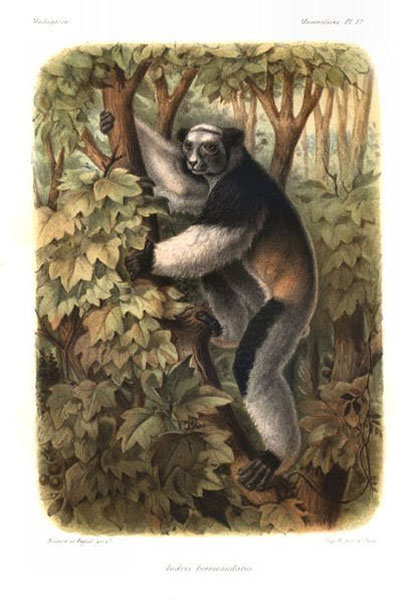
Singing Lemurs Create the Rhythm of Queen’s ‘We Will Rock You’
Paul Seaburn October 27, 2021
According to the “infinite monkey theory,” an infinite number of monkeys randomly hitting a keyboard an infinite number of times will at some point type the complete works of William Shakespeare. That would be an impressive, albeit accidental, accomplishment. But could it be topped? Could an infinite number of monkeys add music to the words and compose the complete works of The Beatles? How about The Monkees? Queen? It turns out the odds of this happening are better because of a species called the singing lemur which has just demonstrated that humans and birds are not the only animals with musical rhythm – singing lemurs matched the beat of Queen’s “We Will Rock You.” What next … lemurs leading the cheers at football games?
Buddy, you’re a monkey, lemur
Shouting in the trees, gonna take on the world someday
You got mud on your face, you big disgrace
Waving your tail all over the place
Lemurs, lemurs rock you
Lemurs, lemurs rock you
— (apologies to Queen)
 Singing lemur by Alfred Grandidier (1875-1921)
Singing lemur by Alfred Grandidier (1875-1921)
While most songs have a 1:1 beat structure with the notes being of the same length, Queen’s “We Will Rock You” has a 1:2 ratio where some notes are twice as long as the others – specifically, the short-short-long pattern of stomps and claps. Mastering that rhythm was thought to be something only humans and a few birds (the nightingale thrush is one) could do until Chiara De Gregorio, a primatologist at Italy’s University of Turin went to the rainforests of Madagascar to study the critically endangered primate known as the indri (Indri indri) or singing lemur – one of the world’s largest lemurs. Their singing was well known – their loud songs can last up to three minutes and are a form of communication or warning signals – but it was thought to be random. De Gregorio and her team discovered otherwise.
“Since indris’ songs are composed of notes that are organized in phrases, they were very good candidates to understand if indris would share the same categorical rhythms that are typical of human music.”
De Gregorio explains in Inverse (and in a study published in Current Biology) how the researchers recorded indris singing in the wild, measured the intervals between the lemur’s musical notes, then “calculated the ratios between two subsequent notes by dividing each onset for its duration plus the duration of the following one.” They were shocked to find the lemurs using the 1:2 ration because “aspects of human musicality rare in other species.”
“Finding in indris [a] musical universal may indicate that human music is not truly novel, but its intrinsic musical properties are more deeply rooted in the primate lineage than previously thought.”
 Does the band need a horn section?
Does the band need a horn section?
Is this a “Planet of the Apes” moment that will lead to singing lemurs taking over the music charts? Hardly. In fact, there’s no chance a million of them working together could compose Queen’s “Bohemian Rhapsody” or “We Will Rock You” because the indri are so critically endangered – there are less than 10,000 in the wild on Madagascar. De Gregorio hopes her work can help save the indri from extinction. Maybe what she needs is a singing lemur cheer.
We will, we will save you, yeah, yeah, come on
We will, we will save you, alright, louder!
We will, we will save you, one more time
We will, we will save you
MU*



















